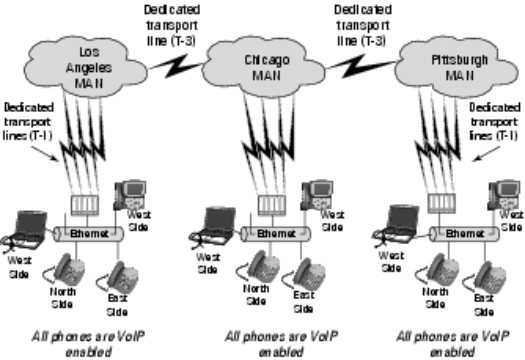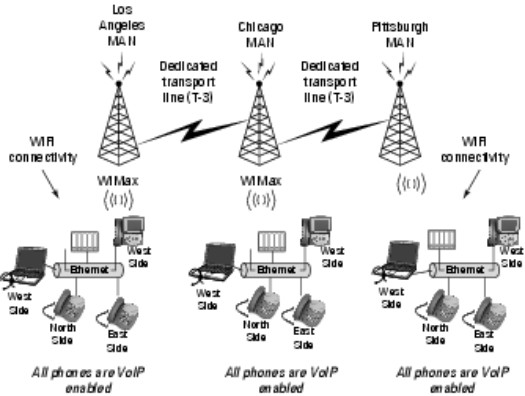WiMax is essentially a wireless technology that allows Ethernet connectivity over long distances — up to 30 miles. This characteristic means WiMax is likely to be used in the implementation of wide area networks (WANs) or as the local loop for a dedicated line.
VoIP has no problem running over a WiMax network, and no special hardware or software is needed. From a VoIP perspective, WiMax is another form (wireless though it may be) of access to the wired, packet-switched network.
Graduating to IEEE 802.16
 | WiMax is short for Worldwide Interoperability for Microwave Access. Like WiFi (wireless fidelity), WiMax specifications are covered by an IEEE standard: 802.16. WiMax is demonstrating speeds in excess of 70 Mbps, which is more than six times the maximum speed of WiFi's 802.11b implementation. |
The maximum range of WiFi is several thousand square feet, depending on which of the 802.11 standards you're using. WiMax is being installed in a limited number of regions as a replacement for smaller WiFi hot spots because WiMax covers a larger geographical area.
Putting WiMax to use
The evolution of WiMax has ushered in a new way of doing wireless. Although WiMax hasn't reached the marketplace to any great degree, manufacturers and service providers are developing models for how to design and sell or lease wireless networks using WiMax technology. The increased bandwidth and flexibility that WiMax offers are influencing how the marketplace views wireless telephony.
When the 802.16 standard was formalized in 2001, it quickly became apparent that WiMax had the potential for seriously changing the way that networks in metropolitan areas are established. The traditional model for network development is to install a local loop at each site location (LAN) to be connected to the larger overall network (WAN). Instead of running a T1 local loop to each location (at an expense averaging $450 to $1,200 per month per location), you could have one WiMax hub that wirelessly interconnects all four locations.
If you run VoIP over this WiMax network, you also reduce the cost of intersite telephony to $0. You can also reduce the cost of your off-net regional (intralata) telephony to the price of local calling. All VoIP on-net traffic would be carried on-net to the closest of the four LANs, and there it would go out to the public switched telephone network (PSTN) as a local call.
If your company has other locations that are beyond the range of your WiMax infrastructure, you can interconnect them by connecting all the WiMax hubs at each metropolitan area. You can then run traditional dedicated transports between the regional WiMax hubs.
For example, suppose you have a WiMax hub covering four offices in Chicago. You could connect this hub via a dedicated line to a similar WiMax hub that covers your offices in Los Angeles, Pittsburgh, or any other metropolitan area. Figure 1 shows how such a network would look if you didn't use WiMax. Figure 2 shows the same network redesigned to take advantage of WiMax.

Figure 1: A traditional network composed of dedicated lines.

Figure 2: A network taking advantage of WiMax technology
No comments:
Post a Comment